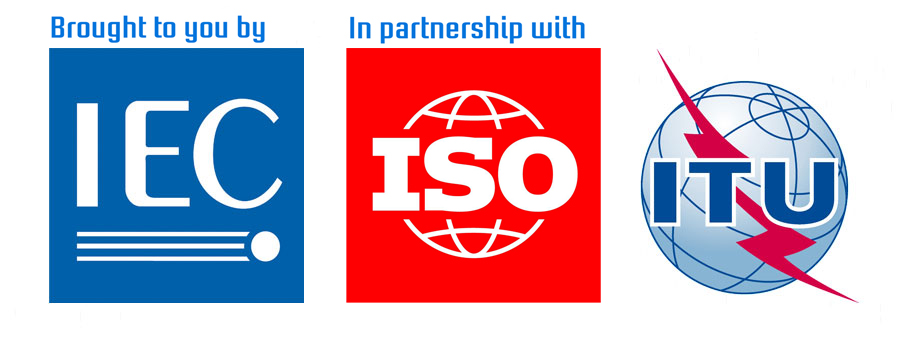Catapulting Water Utilities into Big Data: Operations & Maintenance Best Practices Come First - guest post
The water industry is not sexy – efficient utility operations and maintenance (O&M) even less so. As the former Open Innovation Officer of Veolia North America, the largest environmental services firm in the world, I could go on about the never- ending stream of proven innovations related to big data that have repeatedly failed to launch in the water industry. Yes – no amount of venture funding could get them into enough municipal utility doors or endure the glacial pace required of municipal utilities to procure services and definitely new technologies.
Advanced Metering Infrastructure (AMI) is only part of the water industry’s big data story
Today, AMI has become synonymous with big data technology. Many come to the conclusion that massive water consumption data would lead to huge efficiencies in automating work streams and greatly reducing the room for human error in reading, transferring and billing. However, AMI is neither the full potential of big data; nor has it driven leaps in performance as one has hoped.
For context, before the introduction of meters, water treatment and supply was a more straightforward task. From more ample sources of supply, water was diverted, treated and pumped through leaky pipes to customers at a flat rate. People got their water and cities were enabled to grow.
As cities continued to grow, so too did the strain on water systems. Meters came along to ensure that people and businesses were paying their fair share of the supply and this created the need for water utilities to tweak their billing and collections departments – by adding manual meter reading and customer service teams to handle account billing. A single meter could be read four times per year and with 100,000 accounts, a new data set of 400,000 readings per year was introduced.
AMI, on the other hand, scales the once quarterly readings to 15-minute intervals. This equates to 3,504,000,000 readings per year, which is a massive jump both in terms of data and effect on operations. And as with any complex system of multiple hardware and software moving parts, trouble-shooting billing disputes and maintenance issues becomes problematic very quickly. Operating procedures have not necessarily been updated to address such issues resulting in the possible negative impact on a utility’s public image and poor return on investment.
From Veolia’s global experience managing over 8,000 water and wastewater utilities, the most important set of data-driven metrics related to AMI is the utility’s ability to track and maintain the overall accuracy of its metering population. The catch, however, is that this same capability is strongly tied to the utility’s data gathering and analysis capabilities for its O&M operations. In other words, if a utility has just begun adopting data gathering and analysis to drive decision-making in its O&M operations, it is likely to need more time and resources to build its anchor of a meter asset management program, without which AMI could not add its full value.
Innovations Continue to Respond to Utility Challenges but Adoption Has Been Slow
AMI is by no means considered new technology yet approximately 84% of U.S. utilities - due primarily to their size - do not have it implemented. Meanwhile, they continue to face a maelstrom of issues, including decreased water supplies, aging infrastructure, and limited exposure to the digital age.
Innovators continue to rise to the challenge and respond with updated or even new technologies that rely upon the need to monitor and take action on utility data. Leaks in supply pipes have become unacceptable and customers demand complete transparency on their usage and billing data. As the public sentiment goes, if such technologies are utilized in other industries and regions; then, they should naturally be adopted in the water industry!
Sensor and analytics platform technologies, in particular, have emerged to monitor all aspects of water cycle operations. As promising as the technologies can be, one theme emerged: the lack of data as a driving force in operational knowledge put the brakes on adoption. When data has little role or relevance in utility operations, decisions are still going to be made with or in spite of data. Advanced data and information systems would only serve as mirage that the utility has “modernized”.
Technology Must Follow Function: Identifying O&M Key Metrics that Drive Global Best Practices
Not all is lost. First step is to be honest that the utility operates as a complete system. Every department has a role and can provide input and data to make the utility run ever more seamlessly. Second step is to identify O&M key metrics so that we can separate critical action from noise. No doubt, an abundance of data streams from reservoirs to plant processes to pumps and supply mains, can generate billions of readings per year via wireless network infrastructure and add little value without an anchor from which to trigger action. Third step is to ensure quality data gathering and validation.
In my current role as the Director of Performance Solutions for the West – Veolia’s peer consulting group – I see firsthand utilities’ desire to improve data-driven performance every day. We serve as a peer operator and also assist with North American public utilities to advance on discrete performance targets – without any managerial decision-making, as is typically done in traditional contract O&M.
Veolia’s performance solutions combine strong O&M know-how and experience with a cutting-edge change management practice to help guide utilities through implementing improvement initiatives. We do this on a peer-to-peer level to collaboratively create change programs that will work for each circumstance. We know we do a good job when we see utilities being able to intertwine their O&M knowledge as validated with their own data. This makes my day each time.
And while Veolia has a suite of enabling big data technologies there is a plethora of opportunities for innovative data management tools that can help utilities move from a paper culture to unlocking the full potential of AMI and other more advanced decision making tools.
Again, the key to utility adoption of big data technologies is the knowledge of operational best practices and key metrics that would allow a utility to realize measurable improvement. As a key member of the water industry, Veolia is committed to working with its clients and the industry to improve the safe and sustainable delivery of water to the public.
About the Author:
Ms. Mia Javier is the Director of Performance Solutions – West with Veolia North America. She is based in San Francisco, California and manages a portfolio of client engagements with some of the largest water utilities in the U.S. including the Los Angeles Department of Water and Power and the San Francisco Public Utilities Commission. In this role, Mia is responsible for the commercial and financial success of peer consulting engagements aimed at improving client-informed performance metrics.
Ms. Javier has seven years of experience and expertise as an analyst, manager and developer of innovation-sourcing programs focused on the water industry. Not only is she a prolific author of bespoke market research and investment trends in the cleantech innovation, she has strong management skills and assertive leadership in implementing technical and business processes.
Contact her at [email protected]


